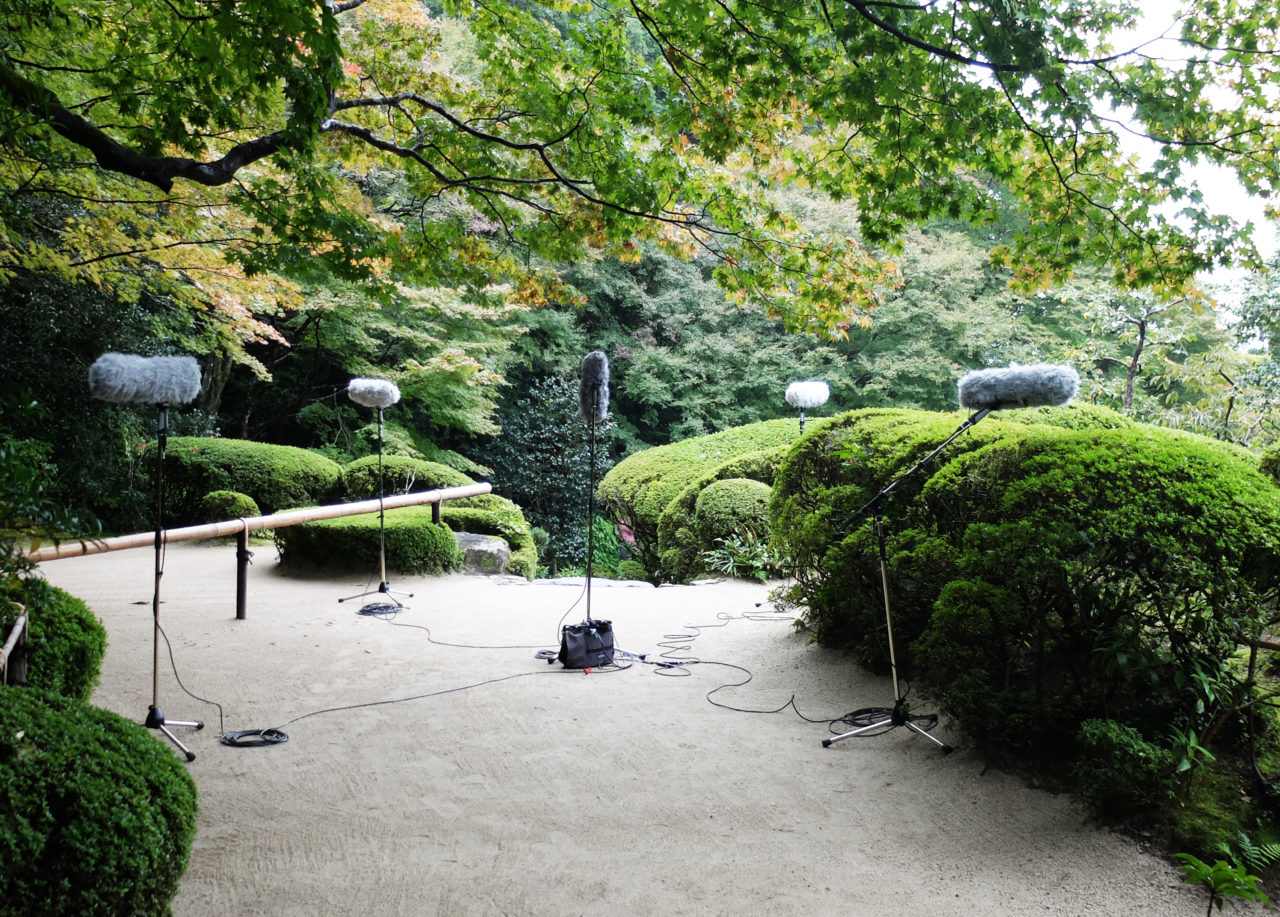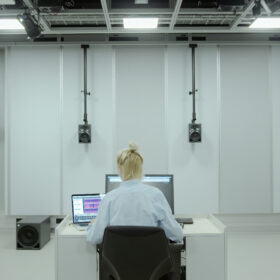
Landscape sounds. Sounds are an intrinsic dimension of human environmental relatedness. While contemporary urban landscape planning practice focuses only on the defensive treatment of unwanted sounds, we should rather prepare for the active design of acoustic qualities for public spaces, which become increasingly important. Through fieldwork-based study, culminating in experimental landscape miking and mixing methods that enable sensory experience and design experimentation, the doctoral study Cultivating Sound – The Acoustic Dimension of Landscape Architecture elucidates and makes tangible landscape-related attributes that are profoundly linked to sonic impressions, but concealed behind the abstract formulations of ‹noise› and ‹silence›.
With the development of landscape-specific recording and mixing techniques, this research redresses the lack of acoustic dimension in common landscape thinking, and the respective analysis and design tools. It investigates auditory landscape space, based on a combination of case studies with contemporary psychoacoustic knowledge that goes beyond what is commonly considered in environmental and architectural acoustics, notably from the fields of music and audio engineering. It shows that there is not one homogeneous auditory space, but rather a dynamic blend arising from the interplay between a more general sonic ambience and different spatialities formed by mixtures of distinct sounds. In order to transfer such insights to strategies for the integration of sound in contemporary landscape analysis and design, the development of appropriate tools and techniques is indispensable.
Field Work Methods Inspired by Orchestra Recording
Cultivating Sound experiments on a novel landscape specific recording approach, inspired by established orchestra recording methods, that combines an environmental reference microphone with situationally positioned source microphones, and allows for a dynamical restitution of the sonic landscape experience. This approach moves on from the notion of soundscape coined in the 1960s, which evokes yet another scape, an auditory entity perceived from a single ideal listening position. Integrative rather than separative, plural rather than singular, it proposes to understand sound as an inherent dimension of landscape, an essentially multisensory, heterogeneous and shared listening field. Through audiovisual interplays between these sonic landscape reconstitutions and different forms of visual landscape representation and modelling, this approach is extended to an intersensory level.

This new field work method recreates auditory space and sonic landscape constellations in a typological way and delivers thus essential elements for a basic sonic landscape design vocabulary. The practical reconnection of sound and landscape, then, is a question of shared values. Sounds are an expression of life, incite wonder and surprise, bear spatial diversity and belonging – all these are values and desires that appear across different cultures and epochs, and also offer contemporary meaning. Acknowledging the human need for environmental sound does not negate but rather evolves prevalent paradigms from their focus on ‹defense› against a selective welcome of it.
Nadine Schütz is a sound architect and researcher at the Chair of Prof. Christophe Girot, with whom she has established a new study focus on landscape acoustics, culminating in her recently accomplished Ph.D. project «Cultivating Sound – The Acoustic Dimension of Landscape Architecture». In the framework of this research she has also designed and coordinated the installation of the AudioVisual Lab for 3D acoustic landscape simulation (AV Lab). In parallel to her academic activity, Nadine Schütz works on urban, landscape and artistic projects (((Echora))).
This dissertation was completed in October 2017, supervised by Prof. Christophe Girot
Co-advisors: Prof. Kiyoshi Sey Takeyama, Prof. Germán Toro-Pérez
Project Funding: Swiss National Science Foundation (SNSF)
An extensive conversation with Christophe Girot and Nadine Schütz about the role of the acoustic dimension and the AV Lab in landscape teaching has been published in Tracés 02/2017.
